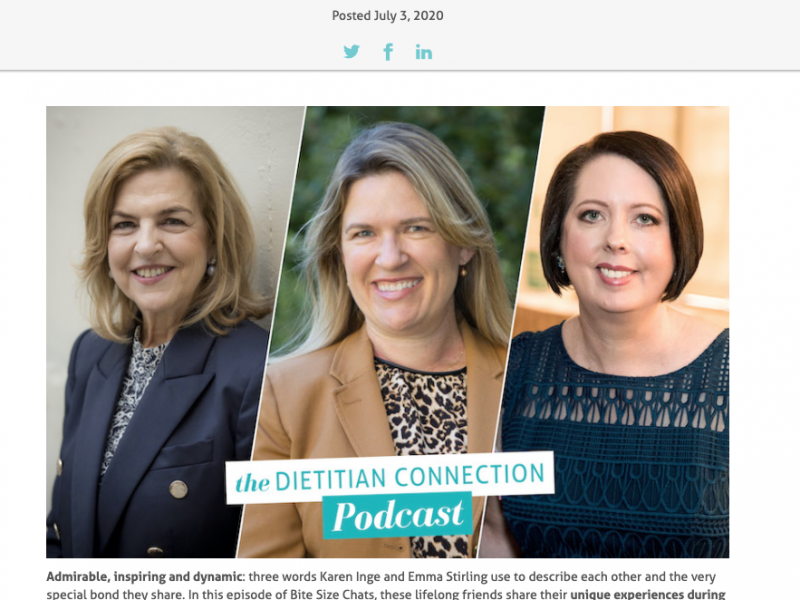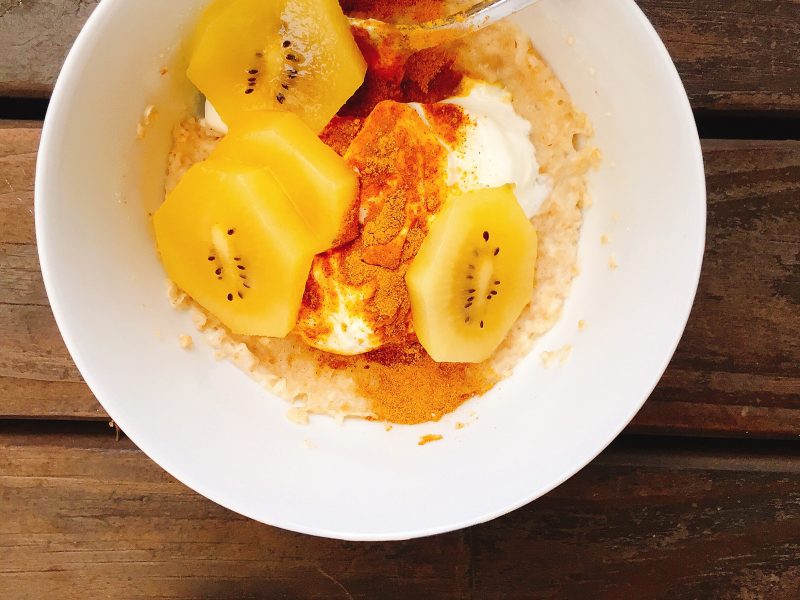Did you catch the news? The new Health Star Rating system that we blogged about back here, has got the green light. Many companies including some of our major players, have pledged to introduce the system on their products any day now. But like any nutrition selection criteria it’s virtually impossible to design a flawless system. However with a commitment to consumer education it can help guide healthier choices. We asked one of our Scoop Subs to bring the new scheme to life.
Liz Harburg is a current Scoop Sub and Brisbane based dietitian who strives to cut through the rubbish and communicate simple real nutrition information to her readers. With a background working in public health nutrition in all sorts of weird and wonderful parts of Australia and the UK, Liz loves sharing practical recipes and advice, usually with her tongue lodged firmly in her cheek. You can check out Liz’s blog simplerealnutrition.com or follow her on Facebook or Twitter: @lizharburg or Instagram.
3 reasons why potatoes are like candy.
Well, the Health Star Rating system for food labels has certainly seen its share of challenges, but it seems to have made a strong recovery and hopefully we will begin to see products displaying their star ratings on our supermarket shelves very soon. The system doesn’t seem to be perfect though.
You would assume that all fresh fruit and vegetables would automatically receive a 5 star rating but a recent review by AusVeg has shown that only a handful fruit and vegetables qualify for the top marks. To be fair, the remaining fruit and vegetables do score a very respectable 4.5 stars. And since the majority of fruit and veg don’t usually come in packets, the star rating system isn’t really designed to rate them. Nevertheless, it’s disappointing that fresh fruit and vegetables aren’t automatically given the 5 stars they surely deserve.
One of the vegetables that doesn’t quite make the grade are potatoes. Poor old spuds have also infamously been likened to candy in some high profile nutrition showdowns in Australia recently. And depending on how you present the info to me, I do have to agree. Potatoes and candy (or lollies as we call them) share some key traits.
1. Everybody loves them: I challenge you to find someone who doesn’t like potatoes or lollies. You can’t. They are both foods that are enjoyed universally, because they are both delicious.
2. They are colourful: Lollies are colourful and so are potatoes. You can get white ones, brown ones, pink ones, orange ones and if look really hard you can even find purple ones.
3. They both contain glucose: It’s true, both lollies and potatoes contain glucose. To be fair, virtually every food on the planet also contains glucose so pairing potatoes and lollies on this basis might be a bit of a stretch.
So there you have it, the humble spud does have a few things in common with candy, but there are also a few important points where they differ. Here’s my more important list , double the number in fact, as to why potatoes are nothing like candy.
6 reasons why potatoes are nothing like candy
1. Potatoes are a vegetable, lollies are not: Enough said really. Potatoes are a vegetable, we need to eat 5 serves of vegetables every day and at the moment more than 90% of Australian’s don’t eat enough vegetables……lollies won’t help you grow up big and strong!
2. Potatoes contain fibre: We need to have about 25g of fibre a day, lollies with 0.0g fibre are not going to help you achieve this, potatoes will. Admittedly in the vegetable stakes, potatoes with their 2.3g fibre aren’t winning any fibre awards, but they definitely smash lollies out of the park.
3. Potatoes contain vitamins: Potatoes may not be named in the superfood category any time soon for their vitamin and mineral content but they do contain more vitamin c per 100g than carrots and they hands down contain more vitamins than lollies, so they are no slouch.
4. Potatoes are low in kilojoules: With only 281kj per 100g potatoes are undeniably a low kilojoules food when compared to jelly beans that contain a whopping 1490kj per 100g.
5. Potatoes are versatile: Potatoes have to be one of the most versatile foods around. They can be mashed, smashed, baked, fried, AND they can be made into vodka. What’s not to love.
6. There are lower GI Spuds: One of the biggest anti-spud arguments is that potatoes have a Glycemic Index (GI) similar to lollies. In nutshell, GI is a ranking that describes how quickly a carbohydrate containing food is broken down by the body. High GI foods, are broken down very quickly which, on one hand means they provide energy very quickly, but on the other hand means that they don’t provide long lasting energy and can leave you feeling hungry. Both lollies and your average potato do have high GI’s.
But, there are a couple of catches.
Firstly, if you pick your potato carefully, you can snag a low GI option, for example sweet potatoes and carisma potatoes are both low GI. Secondly, the way you prepare and eat a food is just as important for GI as the food itself. You actually need to look at the GI of an entire meal. In most cases, you are likely to serve potatoes with a bunch of other vegetables (which are mostly likely low GI) and a some kind of meat. Protein helps to lower the GI of an overall meal and the protein combined with the other vegies will help to balance out the GI of the potato. Cooking and cooling potatoes (to retrograde the starch) and adding vinegar like in a potato salad, also lowers the GI. Unless you are eating your jelly beans with a side of boiled egg and carrots sticks, you are unlikely to achieve the same effect with lollies.
So finally what about that Health Star Rating? Well when we used the brand new calculator (right link on this page) to enter common lollies, they only scored around 2 points, compared to 4.5 for spuds. Even snakes known for their all natural and fruit juice ingredients, only scored 2. So that works for me!
Editor’s comment:
Thanks Liz for this great post. I think it highlights so well that we need to look at a food as a whole. Look at all the attributes including nutrients and the way it is eaten, rather than simply catching on to one claim or concern. I believe the Health Star Rating System will be most beneficial to help people compare and contrast similar foods within one category – along with education that more stars are better. Contrasting foods across categories may not always work. It did for spuds and lollies. But I’m keen to see how my favourite cheese rates? What about you lovely readers? Have you seen the stars on pack yet? What are your thoughts? Have you used the calculator to roadtest products?






